The Superb Breguet Classique 7225, and the Refinement of the Magnetic Pivot
One of the most compelling precision timepieces of our era and a sign that Breguet, after years of quiet, is once again ready to set the pace.

Until recently, for those who have followed Breguet‘s exploits in modern chronometry, one watch has long occupied a special place: the Classique Chronométrie 7727, from 2013. The 7727 demonstrated what high frequency could achieve when combined with silicon components and, quite provocatively, when magnetism, a force that watchmaking usually fears, was not only controlled but leveraged to enhance precision. Yet the 7727 never tried to resolve the contradiction between its innovative mechanics and somewhat overburdened exterior, especially the rather large 10Hz mention on the dial, its most visible compromise.
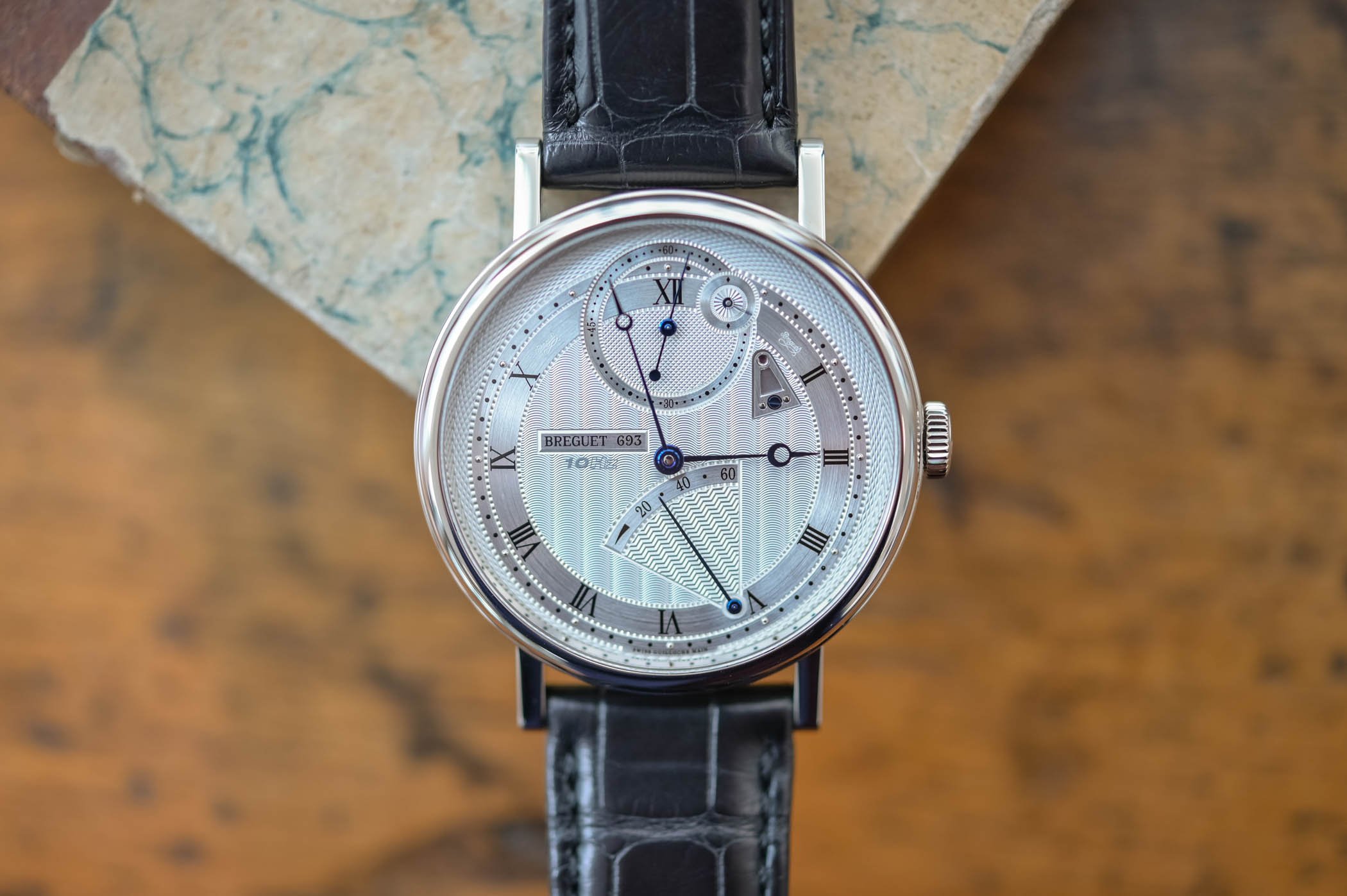
In 2025, the new Classique 7225 corrects that issue spectacularly… Among other significant changes to both the mechanics and design. Conceived for the brand’s 250th anniversary, it is a more mature integration of the magnetic pivot, more refined design language inspired by the historic Breguet No. 1176, and a more confident positioning within the brand’s identity. Having the watch in hand is enough to understand that the Classique 7225 is hardly a revival, but a culmination. It takes the conceptual foundations of the Classique Chronométrie 7727 and folds them into an exceptional watch that feels a true Breguet, technically and aesthetically. The new Classique 7225 is a chronometry piece that fits in perfectly, as it came from the same lineage that gave us the tourbillon, the Souscription model, and the great Breguet pocket chronometers.
A new case for a new era of precision
The 41mm case is a departure from the former Classique Chronométrie design. The traditional fluted caseband and welded lugs are replaced by an integrated lug design and a slightly curved mid-section that echoes the recent Souscription. The shift is subtle and effective; the watch feels well-sculpted, more fluid in form, and naturally proportioned. The mid-case is a small work of art: it’s hand-guilloché with the “Quai de l’Horloge” pattern, which is a direct reference to the front of Breguet’s historic Paris atelier. It’s finely executed and picks up light in rolling waves that contrast nicely with the highly polished bezel and caseback frame.
The thickness is a restrained 10.7mm. On the wrist, the watch feels broad but composed, keeping a distinctly elegant profile. The revised lug geometry allows the case to hug the wrist comfortably despite its 41 mm diameter. On a medium wrist, it sits flat, balanced, and distinctly elegant. The 18k Breguet gold (an alloy of gold, copper, silver, and palladium) used for the case has a tone that’s a little softer than the usual rose or yellow gold, giving the watch a warm hue that suits its purpose: a chronometer first, and a showpiece second. The 7225 is water-resistant to 30m.
The dial, a direct descendant OF the Breguet No. 1176
As complicated as the 7225 is, it is not its complications but its coherence and respect for heritage that make it such a good-looking piece. The dial, in solid Breguet gold, is hand-guilloché with the same “Quai de l’Horloge” motif as the caseband, creating continuity between the architecture and the display. The layout is a close copy of the 1802-1809 pocket watch No. 1176, a four-minute tourbillon with a three-armed, bimetallic compensating balance, chain and fusee, and a natural escapement. The 7225 preserves the 1776’s dial design, which in the early 19th century clearly had no grounds for the nickname it enjoys now: Mickey. Smile if you wish, the piece is serious work.
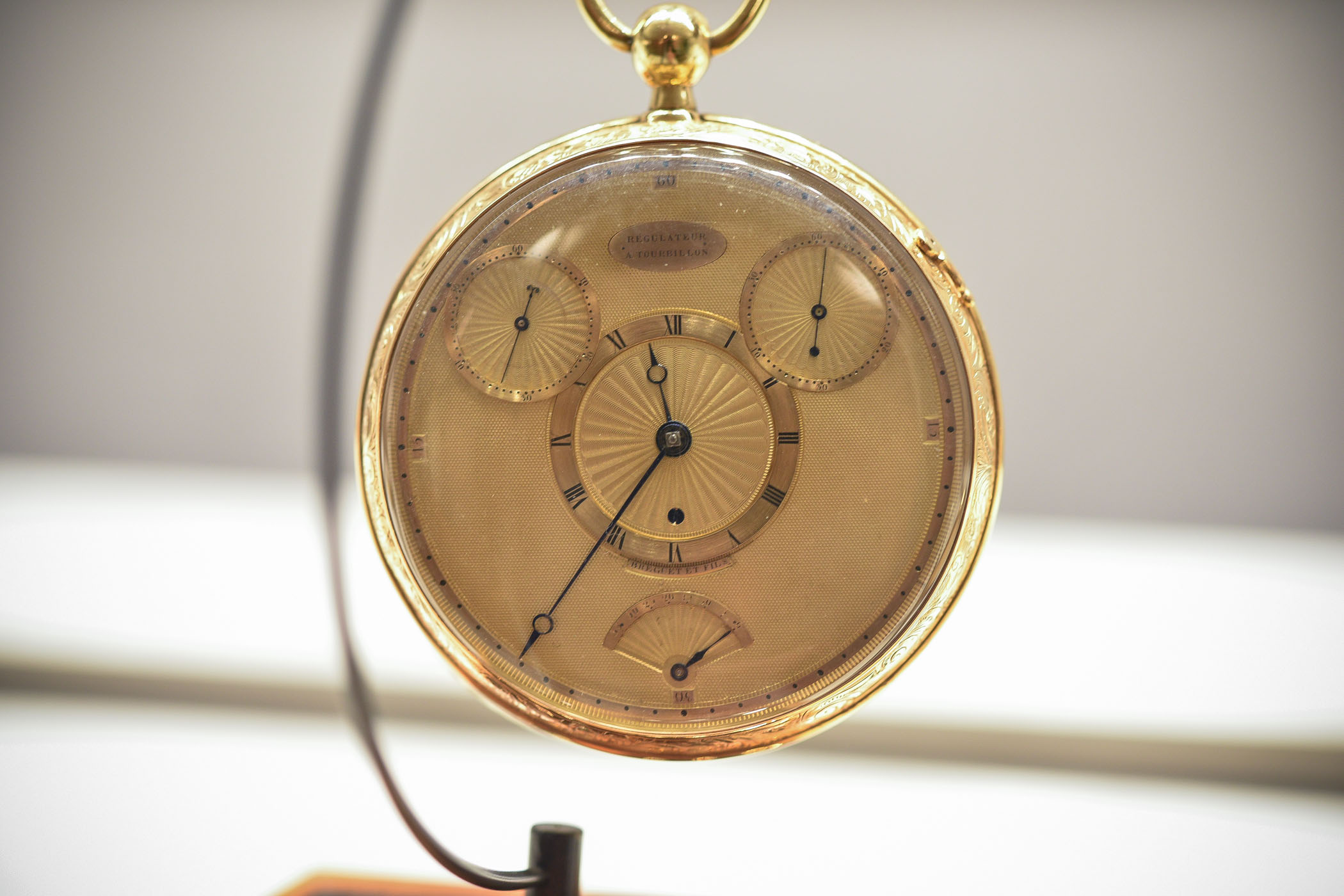
At two o’clock, a traditional small-seconds runs non-stop. At ten o’clock sits the observation seconds, which can be instantaneously reset to zero with the pusher at eight. The seconds then resume in perfect synchrony with the running seconds, allowing the wearer to check the rate or measure short intervals without interrupting the balance. This is not a chronograph but a chronometric instrument, an intermediate timing function designed not for events but to verify rate. Even so, this extra function enables measuring intermediate times or the duration of two simultaneous events, a bit like a one-minute chronograph.
Time is read from a central dial with a radiating guilloché motif and matte blue Roman numerals on a stepped chapter ring. The blue hollow-tipped hands, in heat-treated gold, move above the surface, fine enough to respect the engraving but legible at a glance. A fan-shaped power-reserve indicator at 6 o’clock, with flinqué guilloché in its sector, completes the balanced composition together with a plate below 12 that mentions the reason for the watch to be: the magnetic pivot regulator.
Overall, the dial is one of remarkable harmony, faithful to the spirit, free of modern typographic excess, and connected to the visual language of scientific watchmaking. And even though there’s quite a lot of saturation in the colour scheme (it’s full gold, after all), this monochromatism is not only something that speaks to us (obviously…) but works splendidly.
Movement – magnetic pivot chronometry at 10Hz, perfected
Turning the watch over reveals the new Calibre 74SC, the evolution of the 574DR that powered the 7727. Its architecture may appear familiar, but its engineering has advanced in nearly every detail.
The highlight is the magnetic-pivot regulating system, a concept that remains unique to Breguet. Two micro-magnets, each set into an endstone, generate opposing magnetic fields of around 13,000 gauss. These forces keep the carbon-steel balance staff perfectly centred while allowing only its tip to touch the jewel. In practice, this nearly eliminates positional error: the pivot behaves identically in all six orientations, and gravity’s influence is effectively nullified.
Shock resistance was not overlooked. If a blow displaces the staff, the magnetic pull increases with the distance, snapping it back into perfect alignment almost instantaneously. The balance oscillates at 10Hz (72,000 vibrations/hour) yet suffers minimal wear thanks to reduced friction.
The double silicon balance springs, mounted in opposing alignment, cancel out any asymmetry in their breathing. The silicon lever retains conventional ruby pallets for durability, and the escape wheel, also silicon, is etched so that its spokes form numerals. As it spins, these create a phenakistoscope animation that alternates between “1775” and “2025” twenty frames per second: a fun, discreet, exclusive, and elegant nod to the brand’s anniversary.
All this technology yields performance that few mechanical watches can match. The Breguet Classique 7225 is rated to within ± 1 second per day, a specification much tighter than COSC, Master Chronometer, or Qualité Fleurier standards. For context, its predecessor, the 7727, achieved an accuracy of -1/+3 seconds per day. The improvement required microscopic adjustments in balance design, component tolerances, and magnet alignment, advances that speak to the brand’s incremental engineering mastery. The hand-wound calibre provides a 60-hour power reserve.
The movement’s finishing is appropriate and celebratory. Bridges and plates are treated in a warm Breguet-gold tone and hand-engraved with a panoramic view of the Vallée de Joux, depicting the Manufacture in Le Chenit, the Lac de Joux, and the Dent de Vaulion rising in the distance. The engraving even hides a small steam train, a nod to the region’s 19th-century industrial history. The bevels are mirror-polished, the countersinks are deep, and the overall layout remains disciplined, technical, not decorative for its own sake.
The Breguet Hallmark, a new measure of excellence
The very new Breguet Hallmark is an ambitious internal standard for decoration, performance, and ethics. Each watch is evaluated by a dedicated committee for component quality, finishing, rate stability, magnetic and water resistance, and, where applicable, acoustic testing.
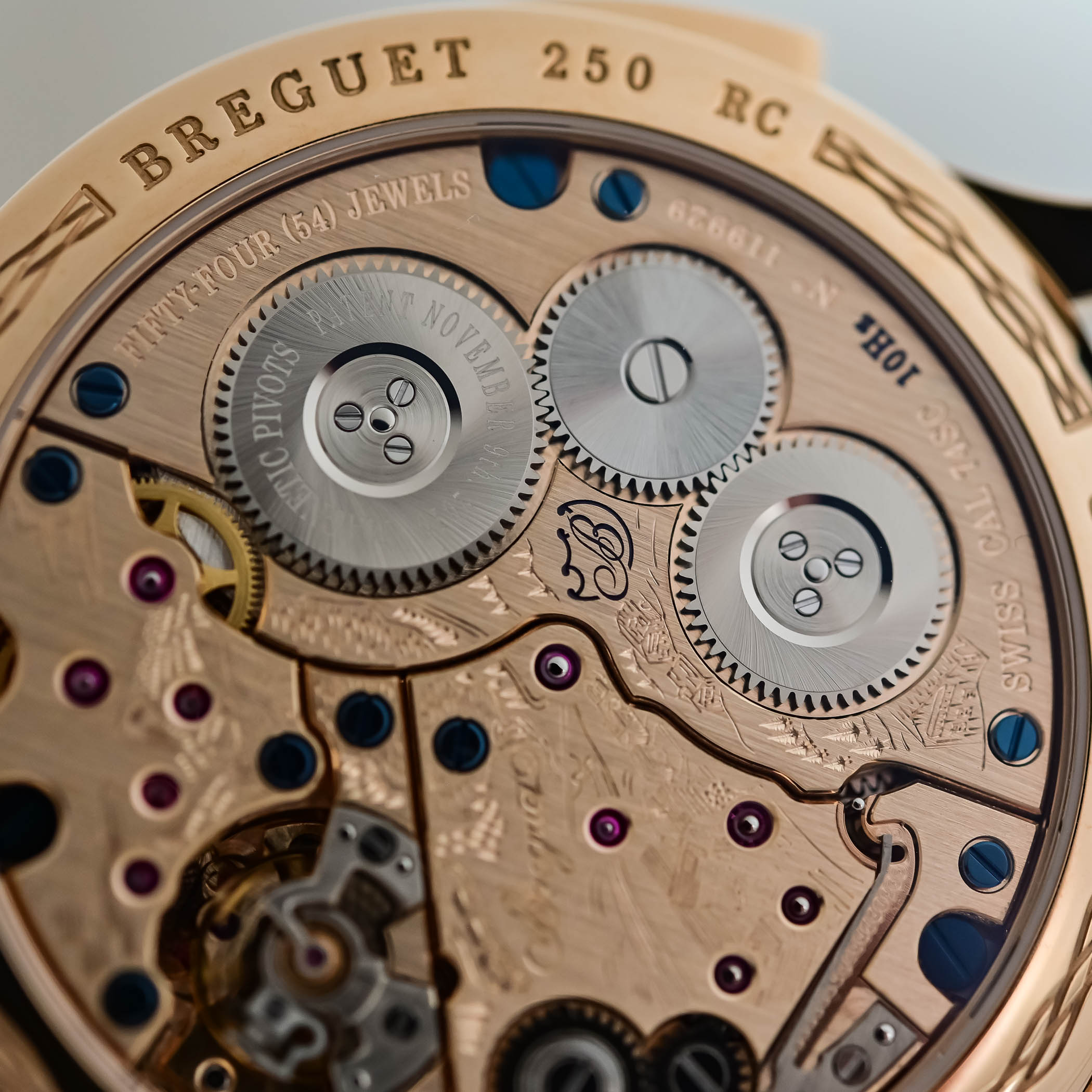
Three precision categories are introduced: Evening (-2 /+6 s per day), Civilian (± 2 s per day), and Scientific (± 1 s per day). Naturally, the Classique 7225, the first watch to receive the seal, qualifies as Scientific. The hallmark also guarantees that every component is Swiss-made, that sourcing and environmental standards are upheld, and that Breguet ensures lifetime serviceability of its watches, a significant promise in an era when repairability often lags behind innovation. It answers concerns regarding the future of silicon components, which can’t be reproduced in the same traditional way as metallic parts.
Strap, availability & price
The Breguet Classique 7225 is worn on a navy-blue large-scale alligator strap with matching lining, closed with an 18k Breguet-gold pin buckle. The 7225 joins the regular collection rather than being limited, though production numbers will naturally remain low. It is priced at CHF 75,000 or EUR 87,900 including taxes.
Concluding notes
The Classique 7225 is not a radical reinvention of the 7727 but its refinement, the moment when a brilliant idea finds its perfect form. It celebrates magnetism, a force feared by horologists, as the key to stability and precision, and it also embodies the brand’s dual identity as engineer and artist. If the tourbillon was A.L. Breguet’s gift to the pocket watch, the magnetic pivot is shaping up to be the brand´s contribution to the wristwatch. The 7225 proves that high-frequency mechanical chronometry is not an old idea but a frontier still worth exploring. Not to mention that it’s also a stunning timepiece, visually and mechanically.
For more details, please visit breguet.com.


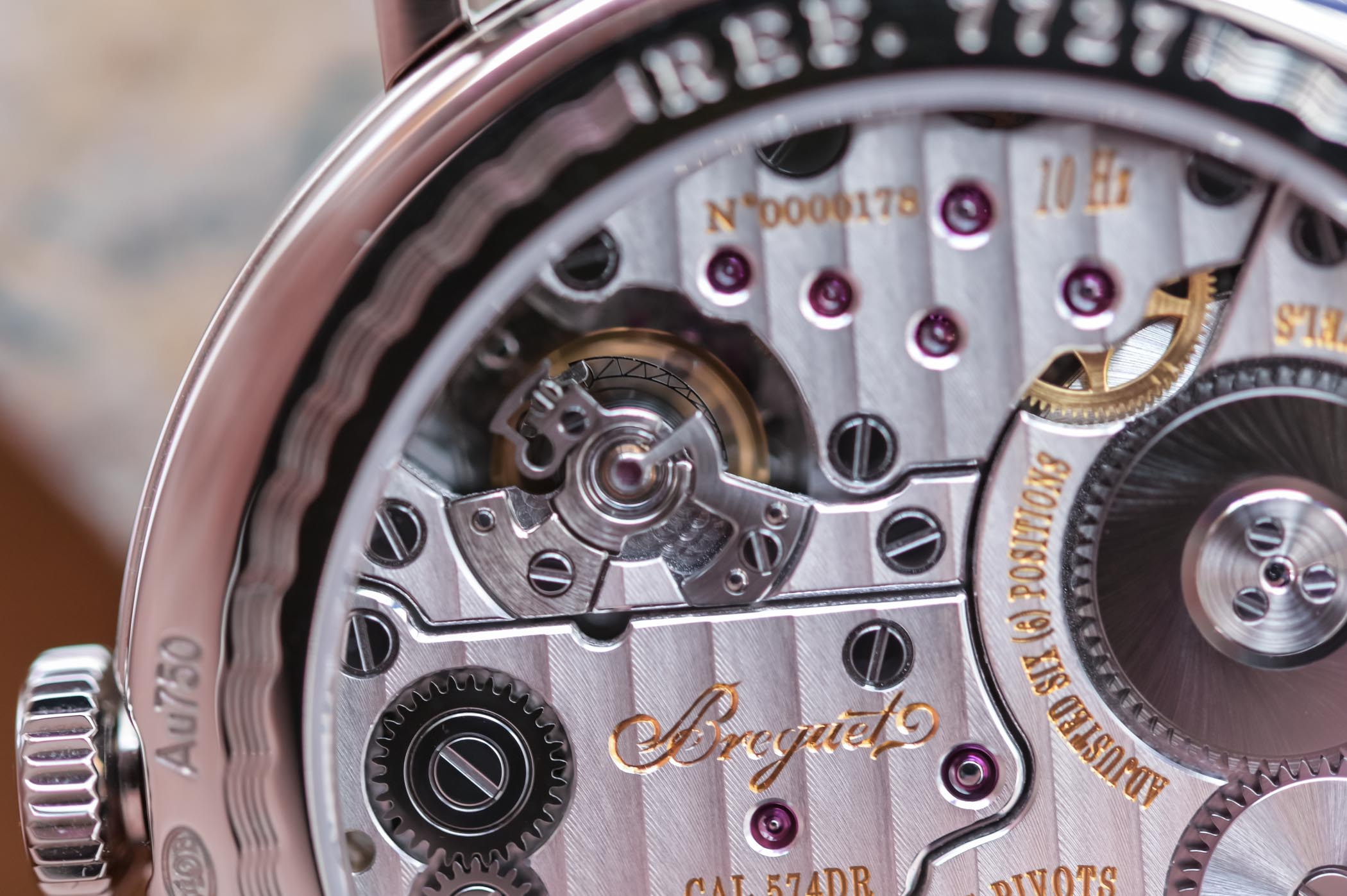
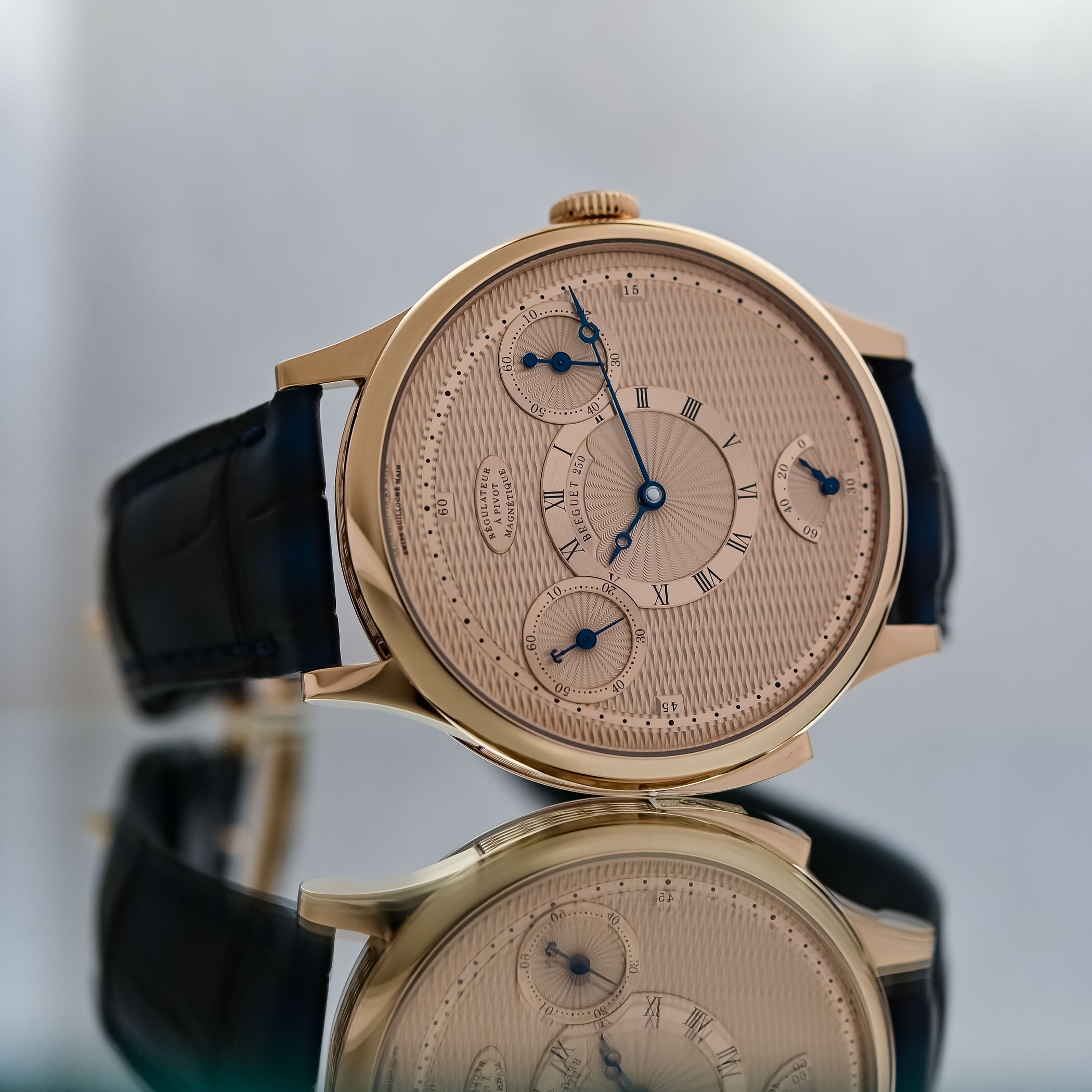

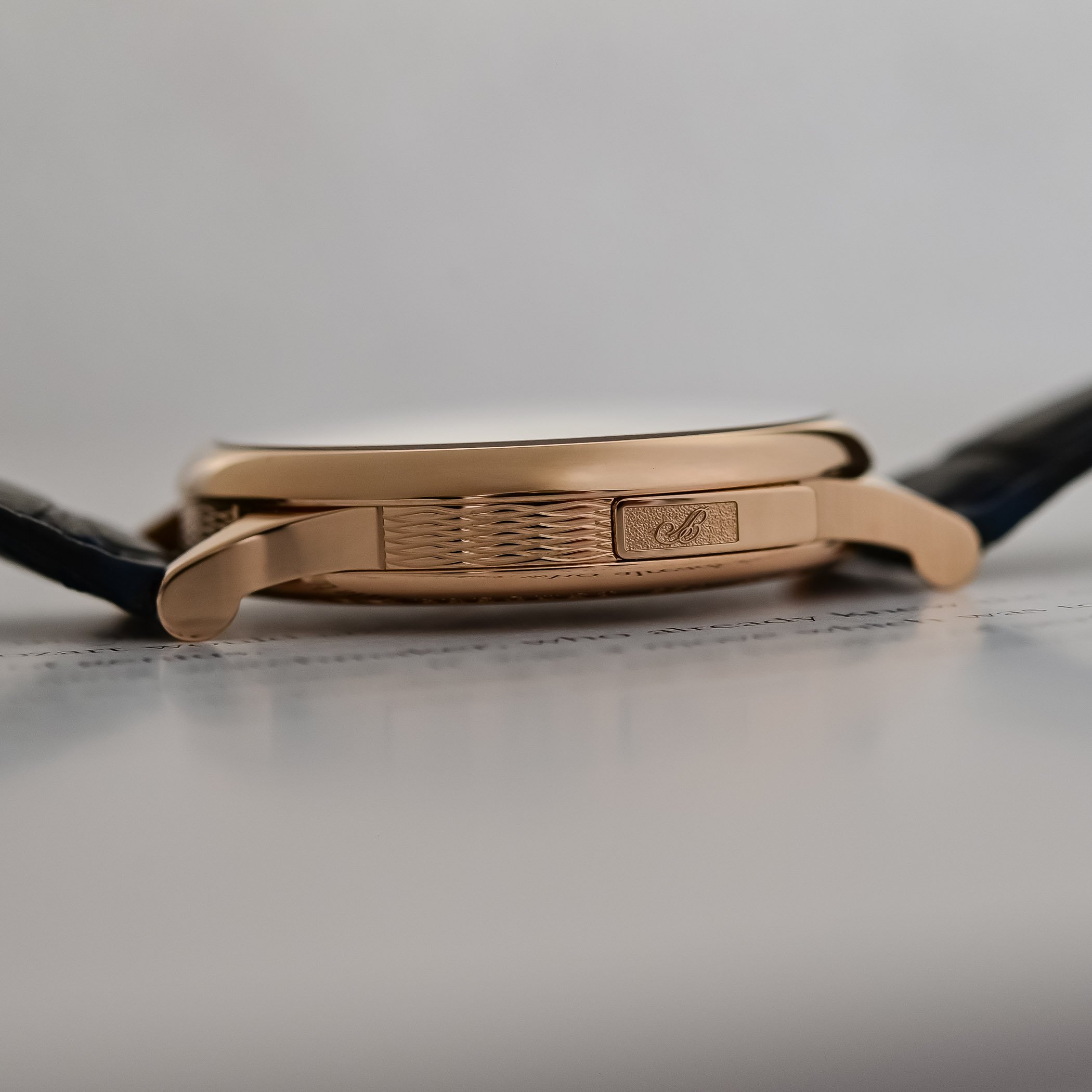
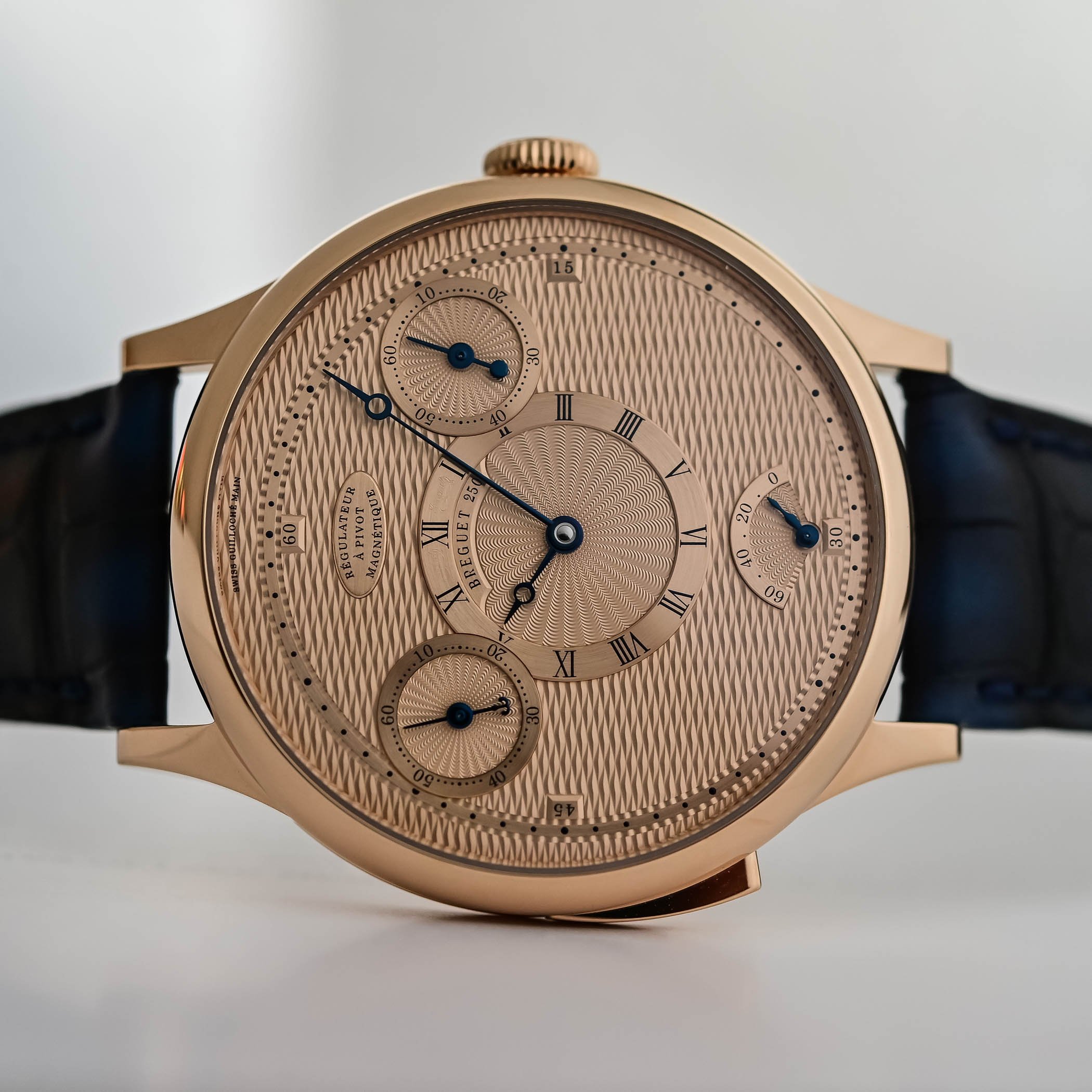






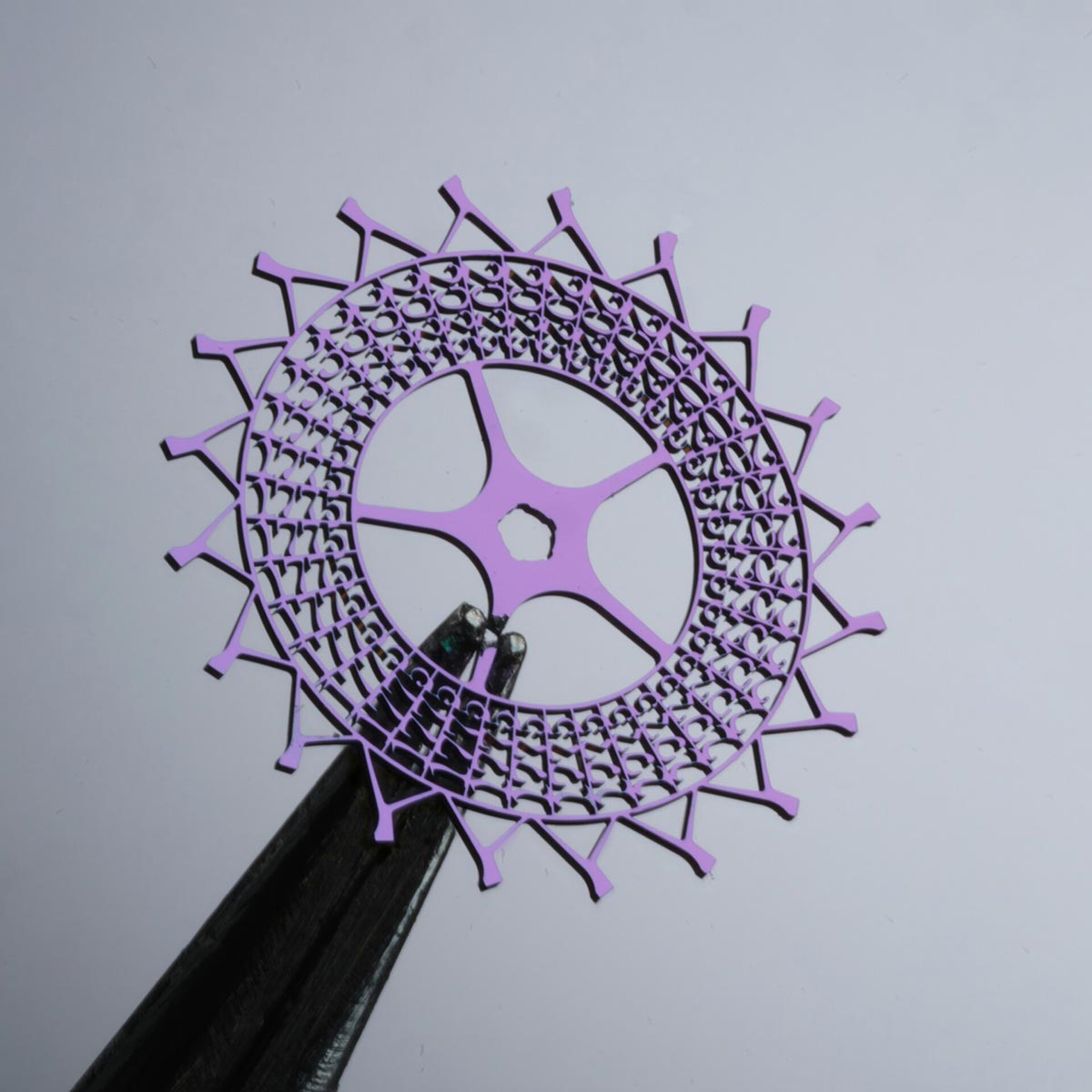

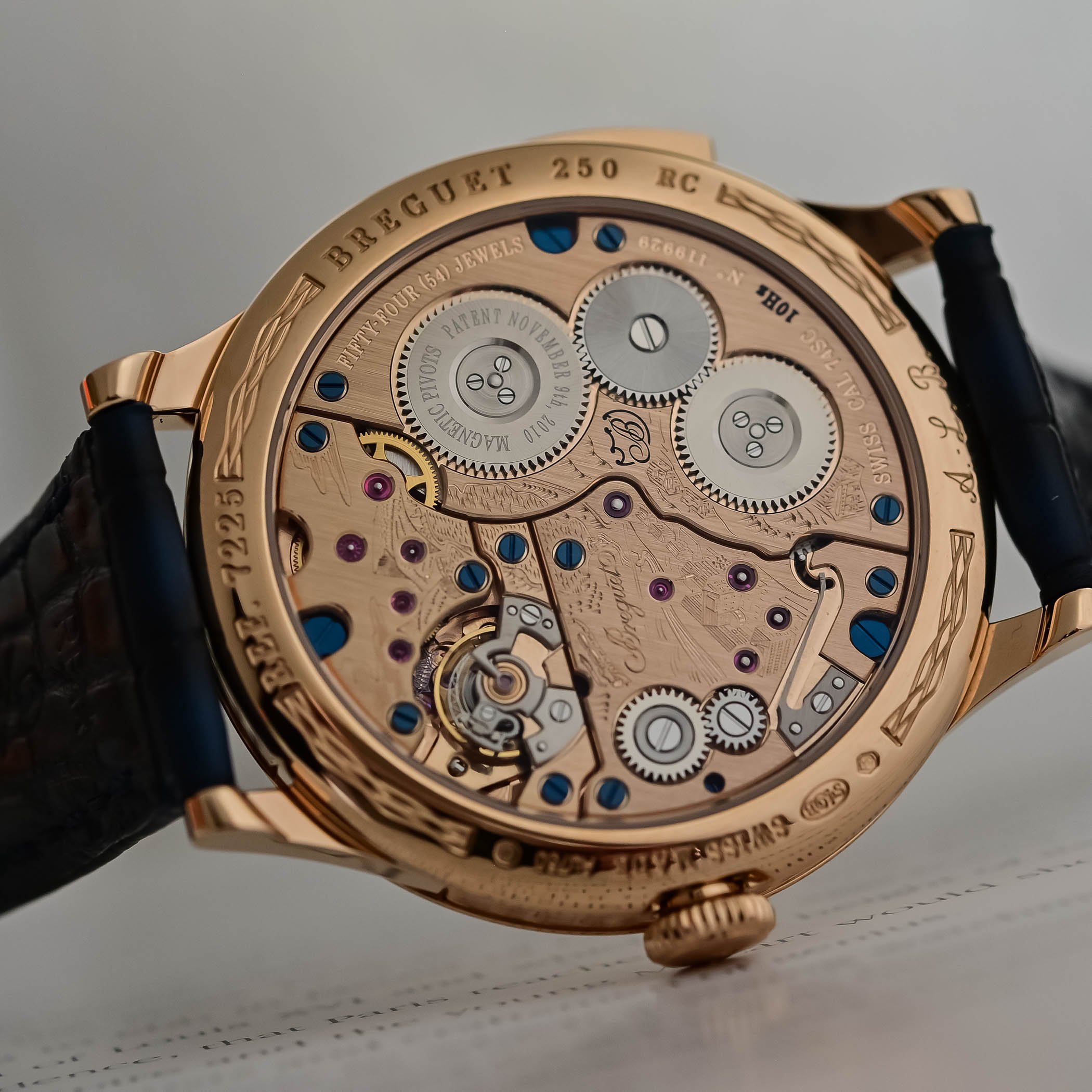

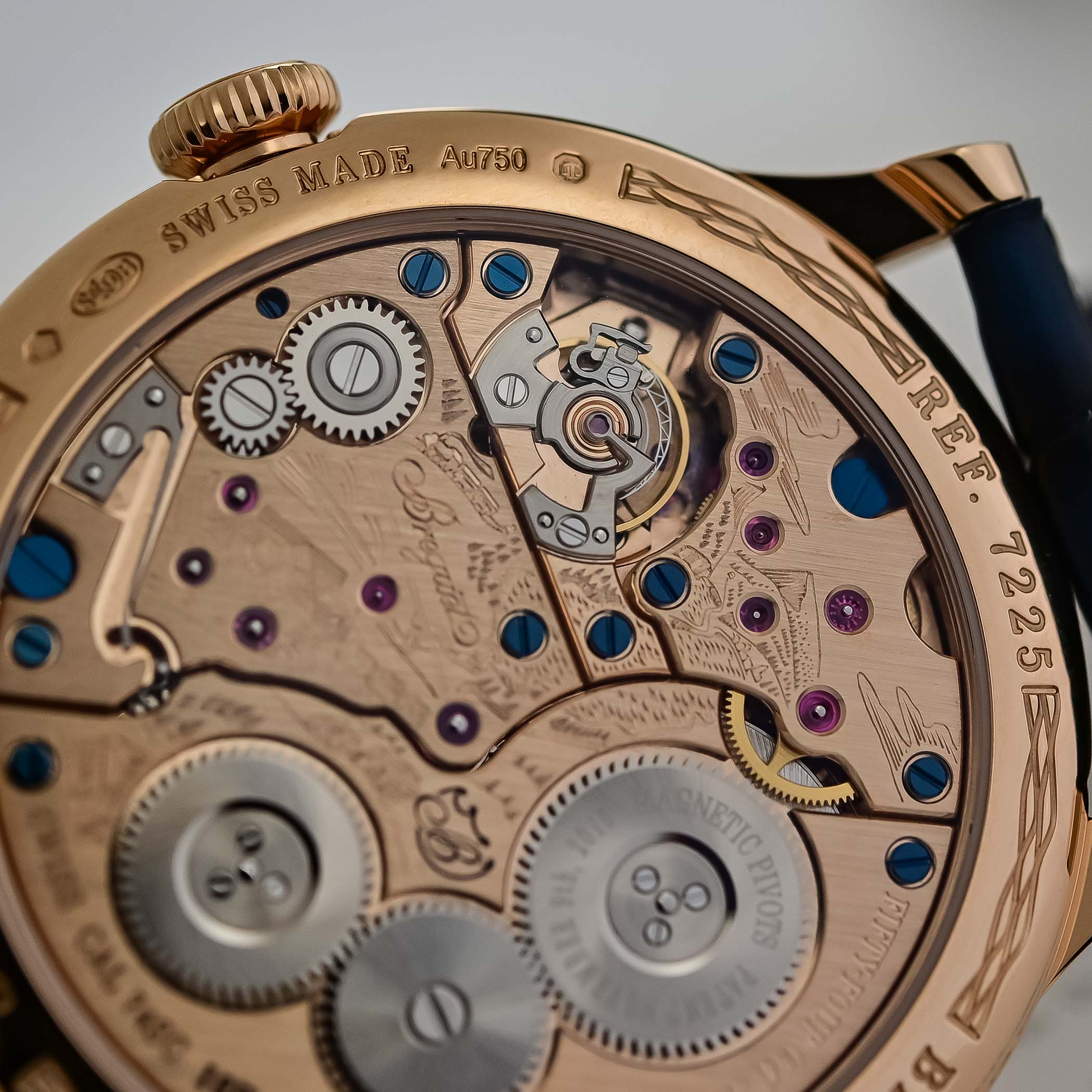

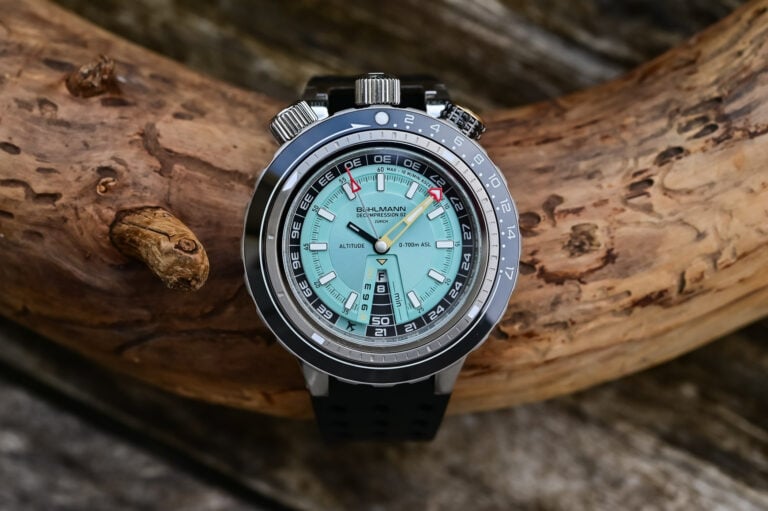
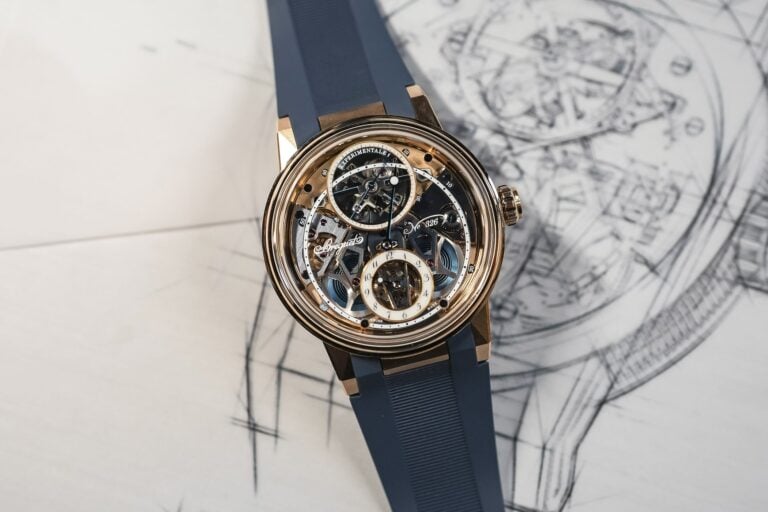
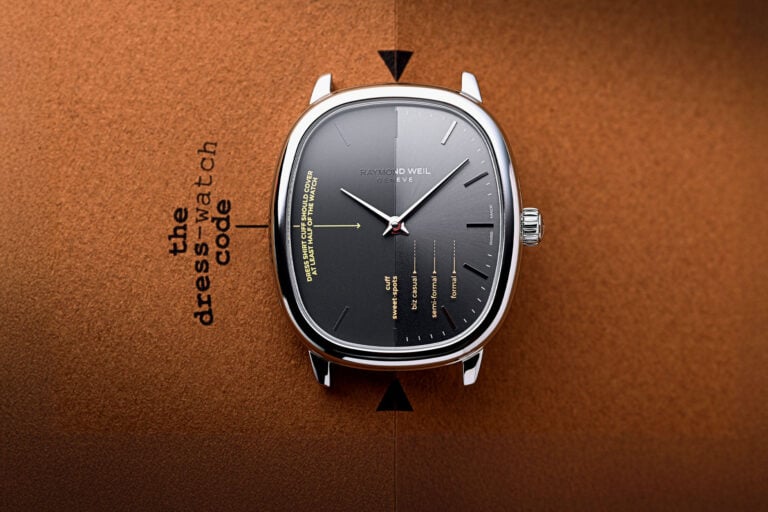
4 responses
Someone elsewhere commented on the Mickey Mouse appearance of the dial. Now I can’t unsee it – so why should you!?
I like the Mickey Mouse look, I find it adds a splash of play to a solid piece of engineering – the real sort, not the usual bs.
The photos do this watch justice, good write-up.
The 7227 was an evolutionary marvel, but the 7225 is easier to digest and enjoy. Worst thing you can say about this watch is that the magnetic pivot technology is in a grey zone between traditional and modern fantasy (since GPS/atomic clocks are the real standard). It’s closer in concept to the traditional mechanical watch than the spring drive, as it still utilizes a lever escapement, but the latest spring drive is ten times as precise.
Frankly, I prefer 7727 design. Softer appearance, and more functional. 7225 was appropriate for a pocket watch, yet look a bit out of place as a wrist watch. Funny enough when you read the commentary in 2013, the 7727 watch was praised lavishly on pages of the same websites. So 10Hz should not appear on a face of the watch, color design can be improved. Those are cosmetic changes. And do not forget a new watch is almost doubled in price. The bottom line: not a special timepiece. I pass.